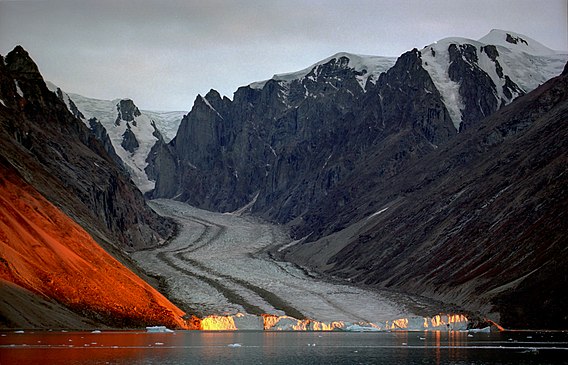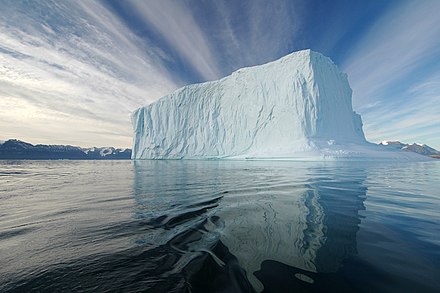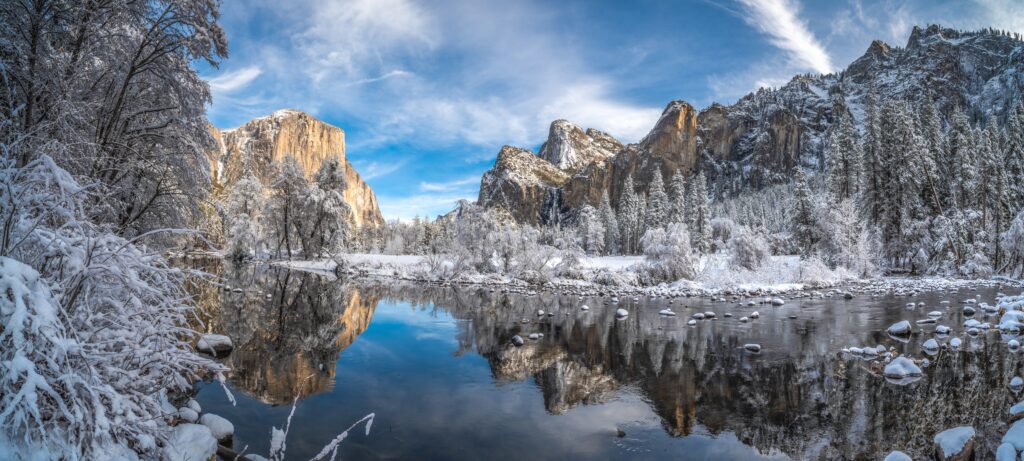
Northeast Greenland National Park, a hidden gem of the Arctic, is a captivating realm of icy landscapes, majestic wildlife, and rich cultural history. Covering a staggering 972,000 square kilometers, it is not only the largest national park in Greenland but also the largest national park in the world. This remote and rugged sanctuary offers a unique opportunity for adventure seekers, nature lovers, and those interested in the delicate ecosystems of the Arctic. In this blog post, we’ll delve into the park’s geography, biodiversity, human history, and the experiences it offers.
1. Geography and Climate
1.1 Location
Northeast Greenland National Park is situated on the eastern coast of Greenland, bordered by the Arctic Ocean to the north and the Greenland Sea to the south. The park was established in 1974 and has been expanding ever since. Its vast and varied landscape includes towering mountains, expansive glaciers, and intricate fjords.
1.2 Terrain
The park features a mix of terrains, from ice caps and glaciers to tundra and coastal areas. The landscape is dominated by the Greenland Ice Sheet, which flows down to form numerous glaciers that calve into the sea. The rugged mountains provide a stunning backdrop, with peaks that can reach heights of over 2,000 meters.
1.3 Climate
The climate in Northeast Greenland is classified as Arctic, characterized by long, harsh winters and short, cool summers. Temperatures can plummet well below freezing during the winter months, while the summer months see milder temperatures, typically ranging from 0°C to 10°C. Precipitation is relatively low, often falling as snow, which contributes to the park’s stunning ice formations.
2. Biodiversity
2.1 Flora
Despite its extreme climate, Northeast Greenland National Park is home to a surprising variety of plant life. The flora primarily consists of hardy Arctic species such as mosses, lichens, and low-growing shrubs. In the summer months, the tundra bursts into life with vibrant wildflowers, including Arctic poppies and saxifrages.
2.2 Fauna
The wildlife in Northeast Greenland National Park is both fascinating and diverse. It provides a habitat for several species that have adapted to the harsh Arctic environment. Notable mammals include:
- Polar Bears: These iconic Arctic predators roam the ice and are often spotted near the coast.
- Walruses: Known for their distinctive tusks, walruses can be seen lounging on ice floes or resting on beaches.
- Reindeer (Caribou): A herd of reindeer can be found grazing on the tundra, providing a vital food source for predators.
Birdwatchers will delight in the park’s avian diversity, including species such as:
- Arctic Terns: These migratory birds travel vast distances and are known for their striking plumage.
- Guillemots and Puffins: Found along the coastal cliffs, these seabirds are a treat for birdwatchers and photographers alike.
2.3 Marine Life
The waters surrounding Northeast Greenland are teeming with marine life. Rich in nutrients, the cold Arctic waters support a variety of fish species, including cod and haddock. These waters are also critical for the survival of marine mammals like seals and whales, which are frequently spotted during summer months.
3. Cultural History
3.1 Indigenous Peoples
The history of human habitation in Northeast Greenland dates back thousands of years. The area has been inhabited by several groups, including the Inuit. The Inuit culture is deeply connected to the land and the sea, relying on traditional hunting and fishing practices for sustenance.
3.2 Exploration
The park’s remote location has made it a challenging area for exploration. European explorers, such as Knud Rasmussen and Peter Freuchen, ventured into these harsh terrains in the early 20th century, documenting the landscapes and cultures they encountered. Their expeditions contributed significantly to our understanding of the Arctic and its indigenous peoples.
3.3 Modern Day
Today, the Inuit community continues to play a vital role in the cultural landscape of Northeast Greenland. Their traditional knowledge of the land and sea is invaluable for conservation efforts and sustainable practices. The town of Ittoqqortoormiit, located just outside the park, serves as a gateway for visitors and a hub for local culture.
4. Outdoor Activities
Northeast Greenland National Park offers a wealth of outdoor activities for adventurers seeking a taste of the Arctic. From hiking and kayaking to wildlife watching, there’s something for everyone.
4.1 Hiking
The park features numerous hiking trails that range from easy walks to challenging backcountry routes. The landscapes are breathtaking, with views of glaciers, mountains, and the expansive tundra. Hikers should be prepared for changing weather conditions and the potential for rugged terrain.
4.2 Kayaking
Exploring the fjords by kayak is an unforgettable experience. Paddling among towering icebergs and alongside curious seals provides a unique perspective on this stunning environment. Experienced guides often offer kayaking tours, ensuring safety while enhancing the experience with their knowledge of the area.
4.3 Wildlife Watching
The park is a paradise for wildlife enthusiasts. Guided tours offer opportunities to see polar bears, walruses, and various bird species in their natural habitats. Respecting wildlife and maintaining a safe distance is crucial to protect both the animals and visitors.
4.4 Photography
With its stunning landscapes and unique wildlife, Northeast Greenland National Park is a photographer’s dream. The interplay of light on the ice, dramatic mountain vistas, and the vibrant colors of the tundra during summer provide endless opportunities for breathtaking photographs.
5. Conservation Efforts
5.1 Challenges
As one of the last true wilderness areas, Northeast Greenland National Park faces several challenges, primarily related to climate change. Rising temperatures are causing glaciers to melt at an alarming rate, threatening the delicate balance of the ecosystem. Additionally, increased shipping traffic and potential oil exploration pose significant risks to the region’s wildlife and habitats.
5.2 Protection Initiatives
Efforts are underway to protect this pristine environment. The Greenland government, along with international organizations, is working to develop sustainable practices and conservation strategies. Education and awareness programs are also essential in promoting the importance of preserving this unique Arctic landscape.
6. Visiting the Park
6.1 Getting There
Due to its remote location, accessing Northeast Greenland National Park requires careful planning. The nearest town, Ittoqqortoormiit, can be reached by air from larger Greenlandic towns like Reykjavik, Iceland, or Nuuk, Greenland’s capital. From Ittoqqortoormiit, boat trips or guided tours provide access to various parts of the park.
6.2 Accommodations
Accommodations within the park are limited, with most visitors staying in Ittoqqortoormiit. Options range from guesthouses to hotels, providing a cozy base for exploring the surrounding wilderness. Camping is also an option for those looking to immerse themselves in nature.
6.3 Safety Considerations
Travelers should be aware of the risks associated with Arctic environments. Weather conditions can change rapidly, and proper gear is essential for safety. It’s advisable to travel with experienced guides who are familiar with the terrain and wildlife.
7. Conclusion
Northeast Greenland National Park is a breathtaking testament to the raw beauty of nature. Its vast landscapes, unique wildlife, and rich cultural history make it a destination unlike any other. As the world grapples with climate change and environmental challenges, this pristine wilderness serves as a reminder of the importance of conservation and the need to protect our planet’s last great frontiers. Whether you’re an adventurer, a nature lover, or simply someone seeking solace in the great outdoors, a visit to Northeast Greenland National Park promises an unforgettable experience that will leave you in awe of our natural world.
As you plan your journey, remember to tread lightly and respect this fragile ecosystem, ensuring that future generations can also experience the wonders of this remarkable park.
The Unique Ecosystem
8.1 Arctic Tundra
Northeast Greenland National Park is a prime example of Arctic tundra ecosystems, where the harsh climate shapes a unique environment. The tundra is characterized by its permafrost, which remains frozen year-round. This layer of soil affects plant growth, leading to a predominance of low-growing vegetation.
In the brief summer months, the tundra comes alive, displaying a vibrant palette of colors. This is the time when migratory birds return to nest, and animals like reindeer roam in search of food. The delicate balance of life in the tundra is a testament to nature’s resilience in extreme conditions.
8.2 Glacial Landscapes
The glaciers of Northeast Greenland are among the most awe-inspiring features of the park. They not only shape the physical landscape but also play a crucial role in the local ecosystem. Glacial meltwater feeds into the fjords and coastal areas, creating rich habitats for marine life.
One of the most significant glaciers in the park is the Flade Isblink, which flows into the northern part of the park. Exploring these glaciers provides insights into climate change, as many are retreating at alarming rates. Guided glacier hikes allow visitors to witness the breathtaking beauty of crevasses, ice formations, and the stark contrast of white ice against dark rock.
9. Engaging with Local Culture
9.1 Inuit Heritage
Understanding the local Inuit culture is essential for anyone visiting Northeast Greenland. The Inuit have a profound connection to the land, having adapted their lifestyles to thrive in this challenging environment for thousands of years.
Visitors have opportunities to learn about traditional hunting techniques, craftsmanship, and the significance of cultural practices. Engaging with local artisans, trying traditional foods, and participating in cultural events can enrich your experience and provide deeper insight into the resilience of the Inuit community.
9.2 Responsible Tourism
As tourism grows in Northeast Greenland, it’s vital to practice responsible tourism. This includes respecting local customs, minimizing environmental impact, and supporting local businesses.
Visitors can contribute to conservation efforts by choosing eco-friendly tours and participating in cleanup initiatives. Promoting sustainable practices helps protect the delicate balance of the park’s ecosystems and supports the livelihoods of local residents.
10. Photography Tips for Capturing the Arctic Beauty
10.1 Best Times for Photography
The Arctic light is unique, offering incredible opportunities for photography. The golden hours during sunrise and sunset provide stunning contrasts, while the midnight sun during summer creates extended daylight for capturing landscapes.
The winter months bring dramatic changes, with the northern lights illuminating the skies. Planning your visit during these periods can enhance your photographic experience.
10.2 Essential Gear
When photographing in Northeast Greenland, the right gear is crucial. A sturdy camera, a variety of lenses, and a tripod will help you capture the beauty of the landscapes and wildlife. Weather-resistant equipment is also recommended, as conditions can change rapidly.
Consider packing extra batteries and memory cards, as the cold can drain batteries quickly. A polarizer filter can enhance colors and reduce glare, making it easier to capture the vibrant hues of the tundra and glaciers.
10.3 Composition Techniques
Utilizing composition techniques can elevate your photography. Leading lines, such as paths or rivers, can guide the viewer’s eye through the image. Including foreground elements, like rocks or wildflowers, can add depth to your landscape shots.
Experiment with different angles and perspectives. A low angle can create a sense of grandeur in the vast landscapes, while capturing reflections in water can add an artistic touch.
11. Preparing for Your Adventure
11.1 Physical Preparation
Exploring Northeast Greenland requires a certain level of physical fitness, especially for hiking and kayaking. Training before your trip is essential to ensure you can fully enjoy the activities.
Incorporate endurance exercises, strength training, and flexibility workouts into your routine. This will help prepare your body for the demands of Arctic exploration, allowing you to take full advantage of the park’s outdoor offerings.
11.2 Packing Essentials
Packing wisely is crucial for a successful trip. Here are some essentials to consider:
- Clothing: Layered clothing is key for managing varying temperatures. Invest in high-quality thermal layers, waterproof outerwear, and insulated gloves and hats.
- Footwear: Sturdy, waterproof boots are essential for hiking and traversing icy terrain. Don’t forget thick, warm socks.
- Camping Gear: If you plan to camp, ensure you have a quality tent rated for Arctic conditions, a sleeping bag suitable for low temperatures, and a portable stove for cooking.

